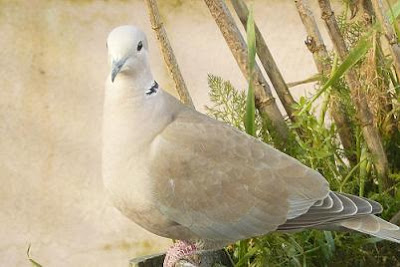
I noticed that I have seen a lot of empty snail shells recently. This is due to the severe weather we've had this winter. how? We saw a lot of Trushes, Blackbirds, and Song Thrushes. All loving seeing these slimy creatures as a highly priced delicacy. So it would be lovely to keep those Trushes, right? Not so easy though. There are many more gardens with lawns about me, and usually birds like these would feed on worms in lawns. Cocking their head when listening for any movement below the grass.
Also, I spotted that at least one of my Blue Tits has started foraging for live food in the undergrowth, and on the ground of the garden. It could mean that it is one of a breeding pair, or it just wanted somethiong different than what I provide it with.

 As usual it is also searching for the food scattered among the Fennel's stalks. And hiding from me in the meantime. Or would it be camera shy?
As usual it is also searching for the food scattered among the Fennel's stalks. And hiding from me in the meantime. Or would it be camera shy?
Great Tit, Parus major

One of my little Coal Tits, Parus ater

One of the snail-eating Trushes: the female Blackbird, Turdus merula

Pied Wagtail, Motacilla alba

I believe this is a male with the full neck & chin bib.
One of the two Collared Doves, Streptopelia decaocto,







































